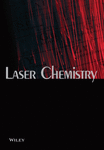The Carbonate, , in Solution Studied by Resonance Raman Spectroscopy
Abstract
The carbonate radical () is of biological significance acting as an intermediate in free radical-mediated damage and is capable of oxidising amino acids and proteins. In order to distinguish between the four possible structures of , nanosecond timeresolved resonance Raman (TR3) experiments were undertaken. Photolysis of persulphate at 250 nm generated the radical which then oxidised sodium carbonate. Resonance Raman spectra of the resulting radical were obtained using a probe wavelength of 620 nm. Point group theory calculations and interpretation of the TR3 spectra suggest that the radical has C2v molecular symmetry.




